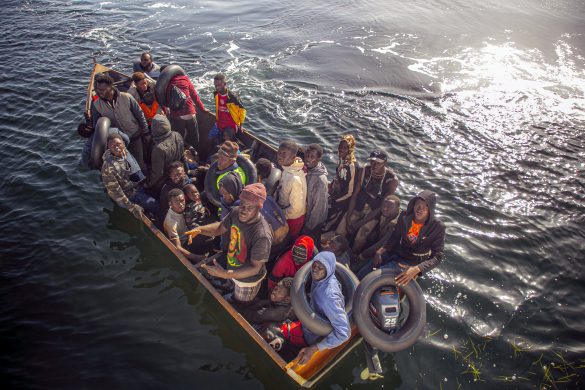I Haiti er kun 2 % af landet dækket af skov, men nu støtter FN et projekt, der giver landet arbejdspladser og noget af den tabte skov tilbage, da den kan beskytte den lokale befolkning mod bl. a. oversvømmelser i den lille caribiske nation, skriver FN’s Udviklingsprogram.
“Reforestation, that’s life. By reforesting the mountains, water sources will be protected and that will prevent landslides,” says Troimène Siméon, a member of a group of women working for the reforestation of the town of Aquin, writes UNDP on its homepage.
“We had problems sending our kids to school. The reforestation project has also greatly helped us economically.”
The dream of Troimène, a mother of one who sells cosmetics, is to see a very green Haiti as it once was. She grows nostalgic as she looks out at the barren mountains of her region.
After each rainfall, which often causes major flooding, Haiti counts its dead and always suffers significant damage. The main cause is the constant and disturbing degradation of the environment.
Faced with this alarming situation, UNDP supports the Ministry of the Environment in its key projects, including to increase the forest cover that today is less than 2 percent.
For example, through the programme for reducing vulnerability in the South, implemented by UNDP in partnership with government authorities,
1.5 million seedlings have been planted for the reforestation of 1,000 hectares in the watershed areas of Aquin and Saint-Louis in the South, and where women devoted to the environmental cause carry seedlings on their heads to the reforestation sites. Nearly 3,600 temporary jobs like Troimène Siméon’s were created each month in 2012.
Faced with growing deforestation fuelled by excessive consumption of wood, the bi-national project called “Green Border” continues its advances on both sides of the border between Haiti and the Dominican Republic.
Its goal is to create an environment favourable for the restoration of the cross- border ecosystems and to reduce vulnerability to climate change in order to improve the living conditions of the Haitian and Dominican people.
Alongside these reforestation efforts, and to protect communities from floods and overflowing rivers during heavy rains, 4,000 meters of riverbank protection walls have been built.
Effective watershed management is a major pillar in radical territorial reform given the environmental crisis facing the country.
UNDP has worked with the Ministry of the Environment to draft a methodological guide for watershed management that will allow all stakeholders to guide the planning and management of watersheds, while preserving the environment.
To mitigate the adverse impacts of climate change on the country’s development process, UNDP is also supporting the government to develop climate change adaptation strategies.
The objective at the heart of this initiative is to strengthen the resilience of communities and productive sectors in coastal areas to better cope with the risks associated with climate change.
Preliminary results of studies conducted as part of this project clearly demonstrate the vulnerability of the country to rising sea levels and drought.
For example, nearly 50 percent of the surface area of Ile-à-Vache Island in the South risks becoming covered by seawater over the next 100 years, while today, major investments in seaside tourism resorts are being planned there.
Læs artiklen her: http://www.undp.org/content/undp/en/home/ourwork/environmentandenergy/successstories/reforestation-project-brings-life-and-growth-to-haitian-communit.html














